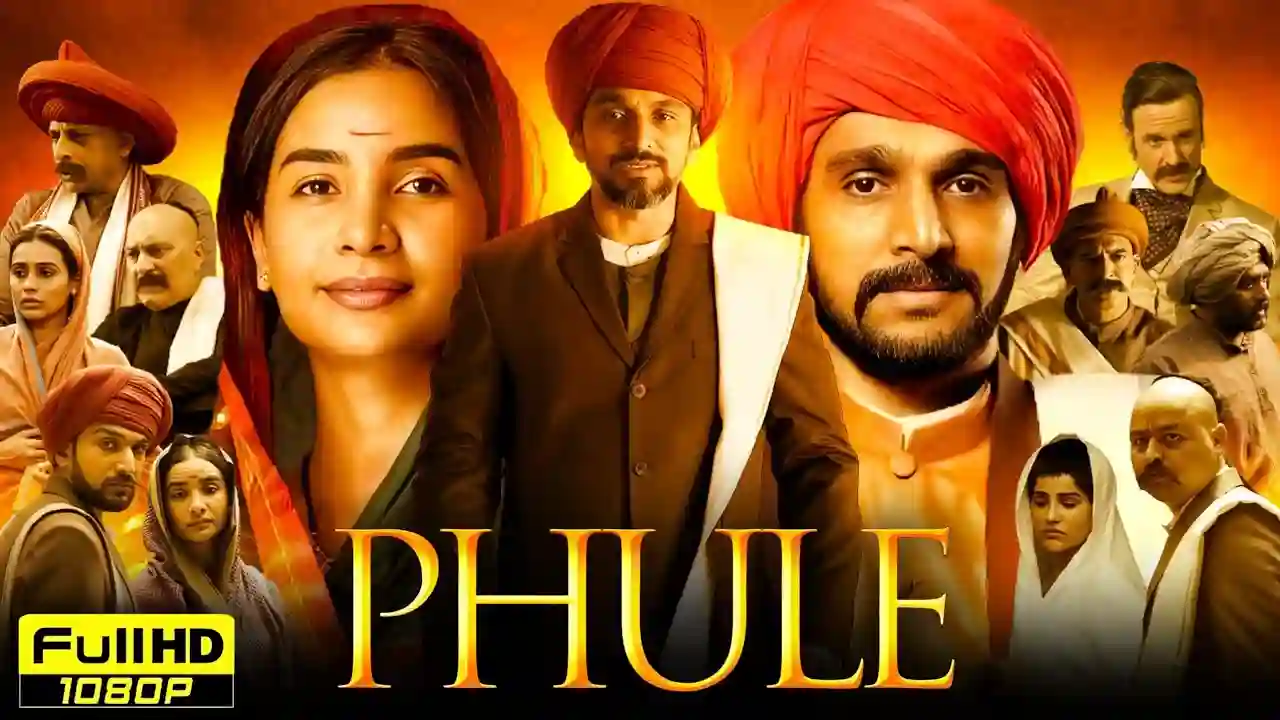A Biographical and Drama film in Hindi, ‘Phule’ was directed by Anant Mahadevan, who also co-wrote the script with Muazzam Beg. Produced by Sunil Jain, Pranay Chokshi, Ritesh Kudecha, Jagdish Patel, Anuya Chauhan Kudecha, and Dr. Raj Khaware, and presented by Dancing Shiva Films and Kingsmen Productions, the movie was released in theaters on April 25, 2025, with a duration of 2 hours and 9 minutes.
Phule Movie 2025 Overview

| Movie Name | Phule 2025 Movie |
| Original Language | Hindi |
| Spoken Language | Hindi |
| Release Date | 25 April 2025 |
| Runtime | 2 hour and 9 minutes |
| Country | India |
| Genres | Biographical |
| Director | Anant Mahadevan |
| Producer | Sunil Jain Pranay Chokshi Ritesh Kudecha Jagdish Patel Anuya Chauhan Kudecha Dr. Raj Khaware |
- Bad Influence Movie 2025
- Mistry S01 Web Series 2025
- Maa Movie 2025
- Kannappa Movie 2025
- Squid Game Season 3 Web Series 2025
Phule Movie 2025 Screenshot



Phule Movie 2025 Star Cast
| Actor | Role |
|---|---|
| Pratik Gandhi | Jyotirao Phule |
| Patralekha | Savitribai Phule |
| Suresh Vishwakarma | Dr. Vishram Ghole |
| Vishal Tiwari | Tatyasaheb Bhide |
| Akshaya Gurav | Fatima Sheikh |
| Jayesh More | Usman Sheikh |
| Darsheel Safary | Yashwant |
Phule Movie 2025 Trailer
Phule Movie 2025 Review
It’s tragic that Jyotirao Phule and his steadfast partner, Savitribai Phule—trailblazers who ignited India’s women’s education movement and battled caste oppression—remain lesser-known figures. Even more disheartening is that the first Hindi film about these reformers falls flat, delivering a lackluster and uninspiring experience.
Set in 1897, the film begins with the bubonic plague devastating Pune, claiming countless lives. Through Savitribai (Patralekha), we journey back to the couple’s early struggles against caste, patriarchy, and rigid traditions. Their path is fraught with resistance—cow dung, stones, and death threats shadow their every move. The Phules’ resilience shines as they defy Brahmin elites, their own kin, and societal norms to educate young girls. Their mission expands to uplift lower-caste communities, support widows, uphold their dignity, and even dig a well for untouchables to access water. Yet, the film’s muted visuals and uninspired storytelling fail to fully captivate.
The film’s strength lies in its unflinching depiction of religion and caste as enduring societal shackles, with women bearing the brunt of their weight. Avoiding preachiness, it holds a mirror to viewers, exposing how these divisions continue to stunt national progress. When Phule remarks that India’s sensitivity and religious divides can be exploited, it’s a sobering nod to the persistence of these issues centuries later. This story offers lessons for crafting a brighter future for generations to come.







